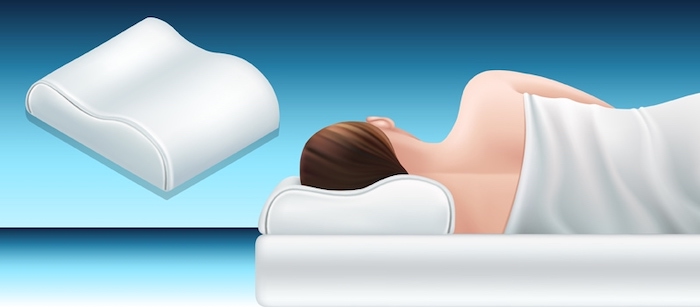
If you have sciatica, the burning, tingling, or stabbing pain that radiates from your lower back down through your leg is an uncomfortable annoyance that often prevents a good night’s sleep.
A little-known method to relieve this pain while lying down is to use pillows in specific ways. Read on to learn more.
Guide For Using Pillows While Sleeping with Sciatica Pain
Finding a pillow and a pillow arrangement that works best for you can increase your chances of getting sufficient sleep. Follow these tips to sleep better with sciatica and feel more refreshed when you wake up:
Find A Medium-Firm to Firm Surface
Before considering pillows, take stock of your sleeping surface. While comfort is a matter of personal preference, many people with sciatica opt to sleep on a medium-firm to a firm mattress. Some people even prefer sleeping on a yoga mat placed on the floor. A firm surface can provide support and promote spinal alignment.
Create A Supportive Reclining Position Using a Two-Piece Wedge Cushion
A two-piece wedge cushion offers a similar position to a reclining chair, but it can be used on the surface of your mattress. The two-piece wedge cushion is designed to prop up your back and elevate your legs, which can take the pressure off the nerve roots in your lower back and may offer you enough relief to fall asleep.
Recline With Plump Pillows Behind Your Back and Flat Pillows Under Your Knees
If a two-piece wedge cushion is out of your budget range, or takes up too much space on your bed, stack two plump, dense pillows behind your shoulders and tuck a flat pillow or two underneath your knees and upper calves to elevate your legs.
Use Pillows to Keep Yourself from Rolling onto Your Side
For many people with sciatica, sleeping on their side exacerbates the pain. You can use pillows to wedge yourself in while you sleep on your back. This simple trick can prevent you from accidentally rolling over in your sleep.
Side Sleepers: Place A Contoured Pillow Between Your Knees
If you prefer sleeping on your side, there are methods you can try to get a good sleep despite the sciatica pain. You may benefit from using a contoured pillow, shaped to fit snugly and comfortably between your knees. A contoured pillow can help reduce lumbar spine pressure and keep your body aligned.
Side Sleepers: Sleep with A Larger-Sized Pillow
A pillow with a large surface area that you can position under your head and against your chest may help bring you comfort while sleeping on your side. You can try a pillow that features customizable thickness levels, allowing you to find a height and density that feels most comfortable to you.
Avoid Sleeping on Your Stomach
As a general rule, sleeping on the tummy is not encouraged because this position can strain your neck and back. But if you like sleeping on your stomach, place a flat pillow underneath your hips to keep your spine aligned. Use a flat pillow or no pillow at all underneath your head, in order to prevent neck strain.
The symptoms of sciatica vary widely among different individuals and what works best for one person may not work for another. Try several of these tips to see which ones help you find a more restful and restorative night’s sleep. If your sciatica symptoms do not improve with these tips and you continue to feel sciatica pain at night, consult your doctor for an accurate diagnosis of your underlying medical condition.
Precision Pain Care and Rehabilitation has two convenient locations in Richmond Hill – Queens and New Hyde Park – Long Island. Call the Richmond Hill office at (718) 215-1888, or (516) 419-4480 for the Long Island office, to arrange an appointment with our Interventional Pain Management Specialist, Dr. Jeffrey Chacko.













